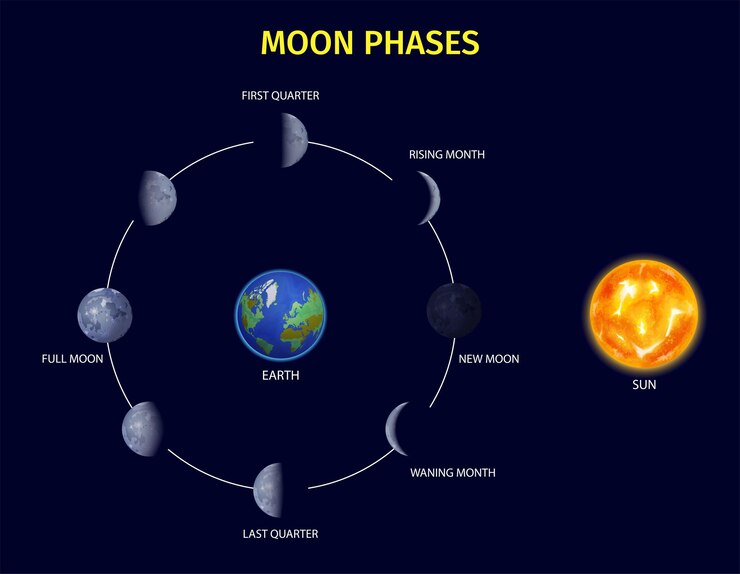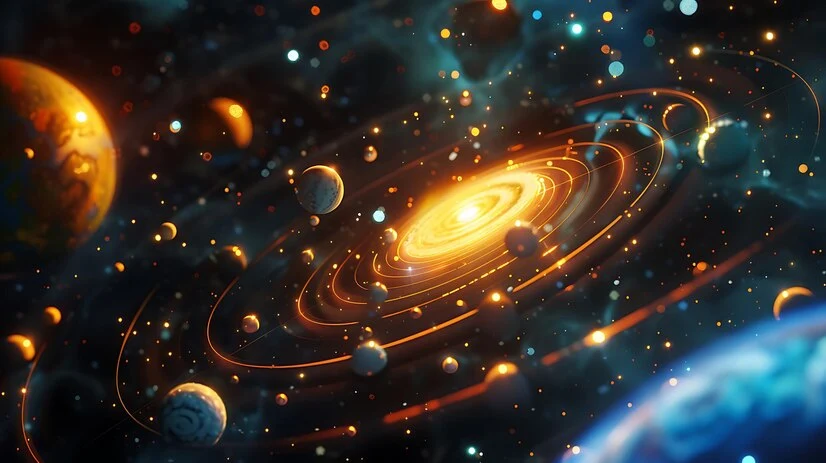Stars have always fascinated humanity. They are the building blocks of galaxies, the beacons of light in the night sky, and the creators of life-essential elements. Among the countless stars spread across the universe, one particular designation has drawn attention Stars-923. This star, or potentially a star system, has become a focal point for astronomers aiming to understand stellar evolution, cosmic dynamics, and the role of stars in shaping the universe.
This article aims to provide an in-depth exploration of Stars-923, diving into its classification, characteristics, potential cosmic significance, and the tools astronomers use to study it. We will also explore how this star might contribute to future discoveries in astronomy and astrophysics.
Basics of Stellar Classification
To understand the importance of Stars-923, it’s crucial to grasp the fundamentals of stellar classification. Stars are classified based on several characteristics, including temperature, luminosity, mass, and spectral type. These characteristics not only determine a star’s place in the cosmic hierarchy but also shed light on its life cycle and eventual fate.
Spectral Classification System
The spectral classification system categorizes stars according to their surface temperature and the elements that are visible in their spectrum. Stars are classified into seven major spectral types: O, B, A, F, G, K, and M, ranging from the hottest and most massive stars (O-type) to the coolest and smallest stars (M-type).
- O-type stars are the rarest and hottest, with temperatures exceeding 30,000 K. These stars are often blue and extremely luminous, but they have short lifespans due to their rapid consumption of fuel.
- B-type stars are slightly cooler, with temperatures ranging between 10,000 K and 30,000 K. These stars are also very luminous and are typically blue-white in color.
- A-type stars have temperatures between 7,500 K and 10,000 K, and they appear white to bluish-white.
- F-type stars are yellow-white, with surface temperatures ranging from 6,000 K to 7,500 K.
- G-type stars, such as our Sun, have surface temperatures between 5,200 K and 6,000 K and appear yellow.
- K-type stars are orange, with temperatures between 3,700 K and 5,200 K.
- M-type stars are the coolest, with temperatures under 3,700 K. These stars appear red and are often the most numerous in the galaxy.
Stars-923 could potentially be a G-type star, similar to the Sun, or a cooler M-type star. Alternatively, it may even represent a more exotic classification, such as a binary star system, where two stars orbit a common center of mass. In such a system, the interaction between the two stars can lead to interesting phenomena, such as mass transfer, where one star pulls material from the other.
Hertzsprung-Russell Diagram
Another critical tool in stellar classification is the Hertzsprung-Russell (H-R) diagram, which plots stars according to their luminosity and temperature. Most stars fall along the main sequence, where they spend the majority of their lives fusing hydrogen into helium in their cores. The position of Stars-923 on the H-R diagram would provide clues about its age, mass, and evolutionary stage.
If Stars-923 is a main sequence star, it is likely in the most stable phase of its life, where the outward pressure from nuclear fusion balances the inward pull of gravity. However, if Stars-923 is an older star, it may have moved off the main sequence, expanding into a red giant or even nearing the end of its life as a white dwarf.
Lifecycle of Stars-923 (From Birth to Death)
Every star, including Stars-923, goes through a lifecycle that is primarily determined by its mass. The lifecycle of a star can be broken down into several key stages: formation, main sequence, red giant phase, and eventual stellar death. Let’s explore these stages in more detail and consider where Stars-923 might be in its evolutionary path.

Formation in a Stellar Nursery
Stars are born in nebulae vast clouds of gas and dust scattered throughout galaxies. These clouds, often referred to as stellar nurseries, contain the raw materials necessary to form stars. The process begins when a region within the nebula becomes dense enough that gravity causes it to collapse. As the gas and dust collapse inward, they form a protostar, which is the early stage of star formation.
Stars-923 likely began its life in one of these stellar nurseries. Over time, the protostar’s temperature and pressure increased until nuclear fusion ignited in its core. This marked the birth of Stars-923 as a fully-fledged star, beginning its long journey through the cosmos.
Main Sequence Phase (A Period of Stability)
Once a star has ignited hydrogen fusion in its core, it enters the main sequence phase. This is the longest and most stable period in a star’s life. During this phase, the star maintains a delicate balance between the outward pressure of fusion and the inward pull of gravity.
If Stars-923 is a main sequence star, it is steadily converting hydrogen into helium in its core. The length of time a star spends on the main sequence depends on its mass. Massive stars burn through their hydrogen much faster than low-mass stars, meaning they spend less time in this phase. G-type stars like the Sun can remain on the main sequence for billions of years, while more massive stars may only last a few million years.
The luminosity and temperature of Stars-923 during its main sequence phase would help astronomers determine its exact classification and predict how long it will remain in this stable phase.
Red Giant or Supergiant Phase (The Beginning of the End)
As a star exhausts the hydrogen in its core, it begins to fuse helium and other heavier elements. This marks the transition into the red giant phase for medium-sized stars or the supergiant phase for more massive stars. During this phase, the star expands dramatically as the outer layers puff outward, and the core continues to collapse.
Stars-923, if it is a medium-sized star, may enter the red giant phase after billions of years on the main sequence. This phase is characterized by a significant increase in luminosity and a change in the star’s color, as it cools and becomes redder.
For more massive stars, the supergiant phase can lead to even more dramatic changes. These stars can fuse elements up to iron in their cores before they undergo a supernova explosion, one of the most energetic events in the universe.
Stellar Death (White Dwarf, Neutron Star, or Black Hole)
The final stage of a star’s life depends on its initial mass. Low- and medium-mass stars, such as G-type stars, will eventually shed their outer layers, leaving behind a dense core known as a white dwarf. This remnant will slowly cool over billions of years, fading into darkness.
More massive stars, on the other hand, may end their lives as neutron stars or even black holes. If Stars-923 is a high-mass star, it could one day collapse under its own gravity, creating a black hole and potentially triggering a supernova that would send shockwaves through its surrounding galaxy.
In any case, the death of Stars-923 will play a crucial role in enriching the interstellar medium with heavy elements, which will go on to form new stars, planets, and possibly even life.
Why Stars-923 is Important to Astronomy?
The study of stars like Stars-923 offers valuable insights into some of the most fundamental questions in astronomy and astrophysics. Stars are not only essential for the formation of galaxies and planetary systems, but they also serve as laboratories for studying the physics of nuclear fusion, the creation of elements, and the evolution of galaxies.
Stellar Nucleosynthesis
One of the most critical processes that occur within stars is stellar nucleosynthesis—the fusion of lighter elements into heavier ones. During their lifetimes, stars like Stars-923 convert hydrogen into helium, helium into carbon, and so on, producing many of the elements that make up the universe.
When stars die, they release these elements into space, seeding the interstellar medium with the building blocks for new stars, planets, and life. In this sense, stars are the factories of the universe, creating the raw materials necessary for everything we see around us.
The study of Stars-923 could help scientists understand how different elements are produced in stars, particularly if Stars-923 is in an advanced stage of its lifecycle, where it may be fusing heavier elements.
Mapping the Galaxy
Stars like Stars-923 also play a crucial role in mapping the galaxy. By studying the positions, motions, and distances of stars, astronomers can create detailed maps of the Milky Way and other galaxies.
One of the key methods for determining the distance to stars is parallax, which involves measuring the apparent shift in a star’s position as the Earth orbits the Sun. For more distant stars, astronomers use standard candles—objects with known luminosities, such as certain types of variable stars—to estimate distances.
Stars-923, if it is part of a binary system or exhibits variability, could serve as a valuable reference point for measuring distances in its region of the galaxy. This would help scientists improve their understanding of the structure and dynamics of the Milky Way.
Probing Dark Matter and Galactic Evolution
Stars also play an indirect role in the study of dark matter, the mysterious substance that makes up most of the mass in the universe. By studying the motions of stars in galaxies, astronomers can infer the presence of dark matter, which exerts a gravitational pull on the stars.
The study of stars like Stars-923 could provide clues about the distribution of dark matter in its region of the galaxy. Additionally, the interaction between stars and dark matter could shed light on how galaxies evolve over time.
Tools Used to Study Stars Like Stars-923
Astronomers use a wide range of tools to study stars like Stars-923, from ground-based telescopes to space missions and advanced data analysis techniques. These tools allow scientists to gather detailed information about a star’s composition, motion, temperature, and luminosity.
Telescopes (Ground-Based and Space-Based Observations)
Telescopes are the primary tool used by astronomers to observe stars. Ground-based telescopes, such as those located at the Mauna Kea Observatories in Hawaii or the Paranal Observatory in Chile, provide high-resolution images of stars and their surroundings.
However, space-based telescopes such as the Hubble Space Telescope and the newly launched James Webb Space Telescope offer an even clearer view, free from the distortions caused by Earth’s atmosphere. These telescopes can observe stars across a wide range of wavelengths, from visible light to infrared and ultraviolet, revealing details that are invisible to the naked eye.
Stars-923 may be a target for one of these telescopes, particularly if it exhibits interesting phenomena such as variability or the presence of exoplanets.
Spectroscopy (Unlocking the Secrets of Stellar Light)
One of the most powerful tools for studying stars is spectroscopy, the analysis of the light emitted by a star. By breaking down a star’s light into its component wavelengths, astronomers can determine its chemical composition, temperature, motion, and even the presence of magnetic fields.
Spectroscopy could reveal valuable information about Stars-923, such as the elements present in its atmosphere, its rotation rate, and whether it is moving towards or away from Earth. In some cases, spectroscopy can also detect the presence of exoplanets by observing the slight wobble in a star’s motion caused by the gravitational pull of an orbiting planet.
Photometry (Measuring Brightness Variations)
Photometry is the measurement of a star’s brightness over time. By observing variations in brightness, astronomers can detect stellar flares, pulsations, or the presence of orbiting exoplanets.
Stars-923 could exhibit periodic dimming if it has planets passing in front of it, or it might show variability due to internal processes such as pulsations in its outer layers. By studying these variations, scientists can learn more about the star’s structure and any potential companions it may have.
Future of Stellar Research
The study of stars is entering an exciting new era, thanks to the development of next-generation telescopes and space missions that promise to revolutionize our understanding of the universe. These tools will allow astronomers to study stars like Stars-923 in unprecedented detail, uncovering new information about their composition, life cycles, and role in the cosmos.
Extremely Large Telescope (ELT)
One of the most ambitious projects in astronomy is the construction of the Extremely Large Telescope (ELT), which is currently being built in Chile. When completed, the ELT will be the largest optical telescope in the world, with a 39-meter primary mirror capable of capturing incredibly detailed images of stars, galaxies, and exoplanets.

The ELT will allow astronomers to study stars like Stars-923 in greater detail than ever before, potentially revealing new insights into their composition, structure, and the presence of orbiting planets. This telescope could also help astronomers probe the early universe, studying the first generations of stars that formed after the Big Bang.
Square Kilometre Array (SKA)
Another groundbreaking project is the Square Kilometre Array (SKA), a massive radio telescope array that will be built in South Africa and Australia. The SKA will be capable of detecting faint radio signals from stars, galaxies, and even the earliest moments of the universe.
For stars like Stars-923, the SKA could provide valuable information about their magnetic fields, their interactions with the interstellar medium, and their potential role in the formation of new stars and planets. The SKA will also help astronomers search for radio signals from extraterrestrial civilizations, raising the possibility that Stars-923 could one day be part of the search for life beyond Earth.
Space Missions
In addition to ground-based telescopes, several space missions are revolutionizing our understanding of stars. The Gaia mission, launched by the European Space Agency, is mapping the positions and motions of over a billion stars in the Milky Way, creating the most detailed 3D map of our galaxy ever made.
The Transiting Exoplanet Survey Satellite (TESS) is another exciting mission, designed to search for exoplanets by observing the slight dimming of stars as planets pass in front of them. Stars-923 could be among the stars observed by TESS, potentially leading to the discovery of new exoplanets in its orbit.
As these missions continue to gather data, we can expect to learn even more about Stars-923 and its place in the cosmic web.
Bottom Lines
Stars-923 represents a fascinating object of study in the field of astronomy. By understanding its classification, life cycle, and potential significance, we can gain valuable insights into the broader processes that govern the universe.
From its formation in a stellar nursery to its eventual death as a white dwarf, neutron star, or black hole, Stars-923’s life story mirrors that of countless other stars that have shaped the cosmos. Its study could help scientists uncover the mysteries of stellar evolution, element creation, and the role of stars in the formation of galaxies and planetary systems.
As new tools and technologies continue to advance, the study of Stars-923 will undoubtedly yield even more discoveries, helping us better understand the universe and our place within it.




Leave a Reply